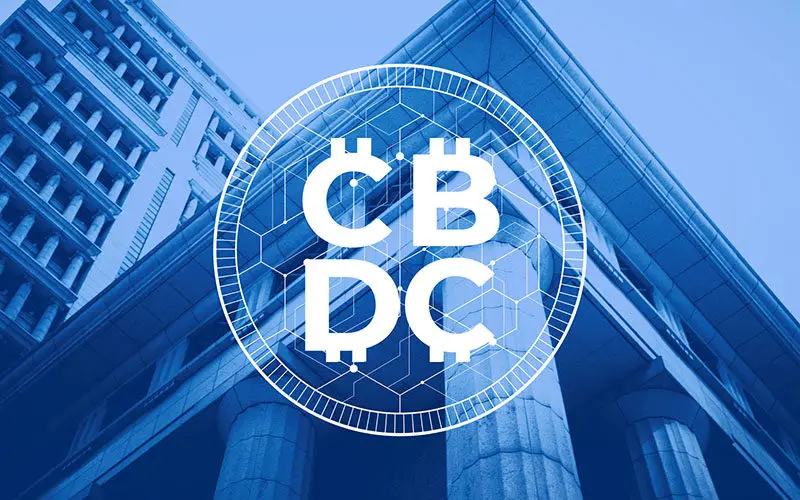The Future of Digital Currencies: Central Bank Digital Currencies (CBDCs) and Blockchain

Executive Summary

In this comprehensive guide, we delve into the fascinating world of digital currencies, particularly focusing on the game-changing paradigm shift represented by Central Bank Digital Currencies (CBDCs) and the revolutionary underpinnings of blockchain technology. We meticulously explore the multifaceted implications of CBDCs, empower you with a thorough understanding of blockchain’s transformative abilities, and shed light on the pivotal role played by digital currencies in shaping the impending landscape of global finance.

Introduction
The digital currency revolution is reshaping the global financial landscape, offering us a glimpse into a transformative future. While cryptocurrencies like Bitcoin have garnered significant attention, another critical development is quietly gaining momentum: the rise of Central Bank Digital Currencies (CBDCs). By leveraging the innovative power of blockchain technology, CBDCs promise to revolutionize our understanding and use of money itself.
CBDCs: The New Frontier of Central Banking
Central Bank Digital Currencies are digital representations of a country’s fiat currency, issued and backed by the nation’s central bank. Unlike cryptocurrencies, which operate independently of centralized control, CBDCs operate within the established financial system, providing a secure and legally recognized form of digital currency.
Key Features:
- Centralized Control: CBDCs are issued and regulated by the central bank, providing stability and legal recognition.
- Digital Form: CBDCs exist in digital form, enabling seamless and efficient transactions.
- Legal Tender: CBDCs are recognized as legal tender within their respective jurisdictions.
- Interoperability: CBDCs can potentially facilitate cross-border payments, reducing transaction costs and delays.
- Enhanced Security: Blockchain technology underpins CBDCs, providing robust security measures against fraud and counterfeiting.
Blockchain: The Foundation of Digital Currency Revolution
Blockchain technology underpins the infrastructure of CBDCs and other digital currencies, providing a secure and transparent platform for transactions. Its distributed ledger system ensures that all transactions are recorded and synchronized across a vast network of computers, fostering trust and immutability.
Key Features:
- Decentralization: Transactions are processed and validated not by a central authority but by a network of computers.
- Immutability: Once a transaction is recorded on the blockchain, it becomes unalterable, providing a permanent and tamper-proof record.
- Transparency: All transactions are visible on the public blockchain network, enhancing accountability and reducing fraud.
- Enhanced Security: Blockchain’s decentralized nature makes it extremely resistant to unauthorized access, protecting users’ funds and data.
- Programmability: Blockchain can support the development of smart contracts, enabling automated transactions based on predefined conditions.
Real-World Applications
Beyond theoretical advantages, CBDCs and blockchain show immense potential for practical applications:
Financial Inclusion: CBDCs can extend financial services to underserved populations, particularly in areas with limited access to traditional banking infrastructure.
Cross-Border Payments: CBDCs can facilitate faster, cheaper, and more transparent cross-border transactions, easing the flow of business and remittances.
Government Efficiency: CBDCs can streamline government disbursements and reduce dependency on physical cash, improving efficiency and reducing operational costs.
Digital Identity: Blockchain can provide a secure and verifiable way to establish digital identities, simplifying KYC and anti-money laundering procedures.
Conclusion
The convergence of CBDCs and blockchain technology propels us toward a future where digital currencies become an integral part of our financial ecosystem. As these technologies continue to evolve and their benefits become increasingly evident, the potential is limitless.
Keywords:
Central Bank Digital Currencies (CBDCs), Blockchain, Digital Currency, Finance, Future of Money
FAQ
1. Are CBDCs cryptocurrencies?
No, CBDCs are not cryptocurrencies. CBDCs are issued and backed by central banks, while cryptocurrencies are decentralized and often independent of any central authority.
2. Is blockchain only used for cryptocurrencies?
No, blockchain has broader applications beyond cryptocurrencies. It can be used to support various industries, including finance, supply chain management, andhealthcare.
3. Is blockchain completely secure?
Blockchain offers enhanced security, but it is not entirely impenetrable. Sophisticated attacks and vulnerabilities can still occur, necessitating ongoing research and development to maintain its security.
4. How will CBDCs affect the stability of the financial system?
CBDCs have the potential to improve financial stability by providing a secure and regulated platformfor digital currency transactions, reducing risks associated with private cryptocurrencies.
5. Will CBDCs replace physical cash?
It is unlikely that CBDCs will entirely replace physical cash in the near future. CBDCs are expected to coexist with physical currency, offering users a range of payment options.
